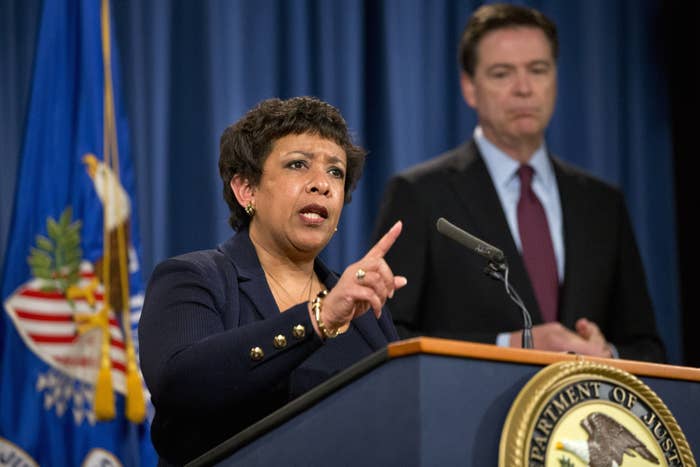
Days after being shown a possible way to hack into the encrypted iPhone used by the man behind the San Bernardino terrorist attack, the FBI is still locked out of the device.
"At this point it's really too early to say how that's going to work out," said Attorney General Loretta Lynch, during a press conference Thursday.
Earlier this week, the Justice Department and Apple were slated to appear before Judge Sheri Pym. Apple was prepared to challenge a court order forcing the company to design new software to help the FBI break into the locked iPhone. The government would have urged judge Pym to keep the order in place, and compel Apple to build the security-suppressing software. In a surprise twist, however, the Justice Department asked that the hearing be postponed.
Over the weekend, an outside party demonstrated to the FBI a method to gain access to the encrypted device. Judge Pym cancelled the hearing and ordered the Justice Department to report back to her by April 5 on whether the iPhone exploit proved to be successful.
The unexpected turn of events prompted critics of the FBI to question the agency's handling of the investigation. Lawmakers and privacy advocates also cast doubt on the FBI's claims that it had previously exhausted all means to gain access to the iPhone before pursuing Apple in court. The seeming last minute heroics of a mysterious outside party seemed all-too-convenient for some, especially since the party is suspected by security experts to be a firm that has contracted with the FBI for several years.
But Lynch and FBI Director James Comey rejected criticism that the FBI has acted in bad faith.
"Certainly at the time we did not have any further avenues of assistance or recourse, and we still may not," Lynch said.
Comey, who recently entered into a verbal sparring match with the Wall Street Journal over the FBI's public battle with Apple, insisted that his agency had no other options.
"We tried everything we could think of, asked everybody we thought might be able to help — inside and outside the government — before bringing the litigation in San Bernardino," he said at the same press conference.
Comey attributed the last-minute breakthrough to the worldwide publicity that the San Bernardino case has attracted. He said the attention has "stimulated a marketplace of creative people all around the world to try and come up with ideas."
And against criticism that the FBI did not pursue other ways into the phone, besides compelling Apple to help, he added, "the notion that we said that we had no alternatives without having tried to exhaust the alternatives is silly."
"The Attorney General and I have said it publicly, I've said it under oath in Congress, so it's true."
During a press call earlier this week, DOJ officials said they were "cautiously optimistic" that the outside party method would grant them access into the device, and to potential evidence. But when asked by reporters why the DOJ moved to postpone the hearing when they weren't completely sure the method was viable, the DOJ officials simply repeated that they were hopeful.
Four days after the method was demonstrated to the FBI, law enforcement officials are still not sure. With 12 days remaining before the Justice Department must report back to Judge Pym, Lynch said, "We're hopeful but we don't know how it's going to resolve itself."
Comey declined to say whether the FBI has worked with the outside party before, which raises further questions as to whether the FBI or another government agency was aware of the iPhone hacking method before this weekend.
Comey also declined to say if the FBI would share information with Apple about the iPhone exploit. Apple attorneys have said they know nothing about the third party's identity or of the method.
